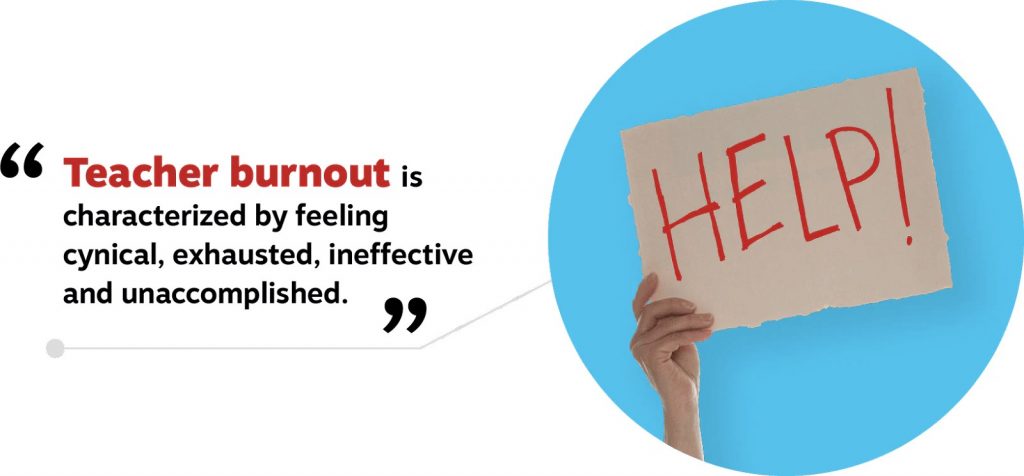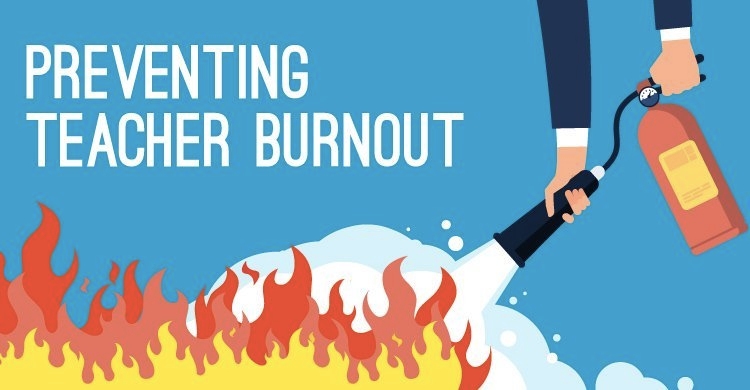- 1. Prioritize Self-Care with Scheduled Breaks
- 2. Implement a “Top Three” Daily Goals System
- 3. Leverage Technology
- 4. Adopt a Gratitude Practice in the Classroom
- 5. Set Boundaries for Work and Home Life
- 6. Incorporate Active Learning Strategies to Engage Students
- 7. Utilize Feedback Loops for Continuous Improvement
- 8. Join or Form a Support Group for Teachers
- 9. Develop a Professional Learning Network (PLN)
- 10. Practice Mindful Teaching
Teaching is more than a job; it’s a calling that involves nurturing young minds and shaping the future. However, even the most passionate educators can find themselves feeling overwhelmed and exhausted. This is where finding effective ways to overcome teacher burnout becomes crucial.
Math & ELA | PreK To Grade 5
Kids see fun.
You see real learning outcomes.
Watch your kids fall in love with math & reading through our scientifically designed curriculum.
Parents, try for free Teachers, use for free
According to a study by the National Education Association (NEA), a staggering 55% of educators are considering leaving the profession earlier than planned, a significant increase attributed to the stresses and challenges of teaching, especially in recent times. This statistic highlights the urgency of addressing teacher burnout, not just for the well-being of teachers but for the quality of education.
In this blog, we’ll explore teacher burnout, identify its symptoms, delve into its causes, and, most importantly, share the best ways on how to avoid teacher burnout. Whether you’re feeling the first signs of burnout or in the midst of it, this guide offers practical advice and support. By the end, we hope to provide you with strategies to rejuvenate your passion for teaching and remind you that you’re not alone in this journey.
Seeking solutions for teacher burnout? SplashLearn is here to help. Register today and unlock a treasure trove of resources for teachers like you.
What is Teacher Burnout?

Teacher burnout is a state of emotional, physical, and mental exhaustion caused by prolonged stress in the teaching environment. This exhaustion goes beyond the typical end-of-the-day tiredness.
Distinction Between Burnout and Stress
While stress and burnout might seem similar, they differ. Think of stress as feeling under too much pressure, a tension that might push you to work harder and meet deadlines. It’s like a heavy backpack that’s tough to carry but can be put down at the end of the day.
Burnout, on the other hand, is when the backpack feels so heavy that even when you put it down, you still feel its weight. You’re not just tired; you feel disillusioned, detached, and unable to muster your usual enthusiasm for teaching or daily activities.
What Causes Teacher Burnout?
Teacher burnout can stem from various external pressures and personal tendencies. By pinpointing these causes, educators can better navigate toward solutions and strategies for prevention. Here’s a breakdown of the primary causes of teacher burnout:
External Factors:
- High Workload: The ever-increasing pile of assignments, assessments, and administrative tasks can be overwhelming, leaving teachers feeling like they’re constantly trying to catch up.
- Lack of Resources: Insufficient materials, outdated technology, and inadequate classroom supplies can make teaching more challenging and frustrating.
- Administrative Pressure: Demands for higher student performance, accountability measures, and constant changes in curriculum or standards without proper support can add significant stress.
- Unrealistic Expectations: The gap between expected outcomes and what’s realistically achievable with available time and resources can lead to failure and dissatisfaction.
Interpersonal Factors:
- Challenging Student Behaviors: Dealing with disruptive behavior, lack of engagement, or apathy from students can drain a teacher’s energy and enthusiasm.
- Lack of Support from Colleagues: Feeling isolated or unsupported by fellow teachers or school administration can amplify stress and feelings of inadequacy.
- Parental Pressure: Navigating high expectations, criticism, or lack of involvement from parents can add to the emotional burden.
Personal Factors:
- Perfectionism: Striving for perfection in teaching practices, lesson plans, and student outcomes can set unattainable standards, leading to constant disappointment.
- Lack of Work-Life Balance: Spending too much time on work-related activities at the expense of personal time can lead to burnout. Finding balance is crucial in maintaining enthusiasm and energy for teaching.
- Inability to Say No: Having too many responsibilities, committees, or extracurricular activities without adequate time or resources can lead to overload.
Understanding these causes is pivotal in exploring ways to overcome teacher burnout. By addressing these factors, educators can work towards creating a more sustainable and fulfilling teaching experience, ensuring they have the energy and passion to inspire their students every day.
Related Reading: How to Create a Teaching Plan in 6 Easy Steps
12 Best Way to Prevent Teacher’s Burnout

Understanding the causes of burnout is crucial, but knowing effective ways to preventing teacher burnout is even more vital. Here are some practical ways to overcome teacher burnout that can help teachers manage stress and avoid burnout:
1. Prioritize Self-Care with Scheduled Breaks
Taking care of yourself isn’t just about the occasional spa day; it’s about integrating self-care into your daily routine. Schedule short breaks to step away from your desk, stretch, or briefly walk. These moments of pause are crucial for mental and physical rejuvenation, helping to prevent the accumulation of stress that leads to burnout.
2. Implement a “Top Three” Daily Goals System
Overwhelm often comes from feeling like everything is a priority. Each day, choose three main tasks you want to accomplish, focusing your energy on completing these before moving on to less critical tasks. This method simplifies your to-do list, reduces procrastination, and increases your sense of achievement, directly countering feelings of inadequacy and overwhelm.
3. Leverage Technology
Embrace educational technology to minimize the time spent on administrative tasks, often cited as major contributors to teacher burnout. Tools like SplashLearn can be of great help. With Splashlearn, you can:
- Reduce time Spent on Lesson Planning and Grading:
Automatically adjusts to each student’s learning level, providing personalized challenges.
Saves teachers significant time and effort in creating lesson plans and grading assignments.
- Alleviate Pressure to Constantly Innovate:
Provides a variety of engaging, curriculum-aligned activities, reducing the need for teachers to create new content manually.
Helps maintain a dynamic learning environment without the added stress on teachers.
- Facilitate Parent Involvement
Enables easy communication with parents about their child’s progress and learning milestones.
Shares reports and updates directly with parents, fostering a collaborative relationship between home and school.
- Have Ready-to-Use Lesson Plans
SplashLearn includes a library of lesson plans that align with curriculum standards, significantly cutting down preparation time.
These plans are engaging and interactive, designed to make learning fun and effective.
- Personalize Assignments
Teachers can assign specific activities to individual students or groups, tailoring the learning experience to meet diverse needs.
This personalized approach enhances student learning outcomes and engagement.
Teachers can manage their workload by leveraging SplashLearn for lesson planning, assignment distribution, and parent communication.
Related Reading: Why is Technological Advancemement the Fututre of Education
Don’t let burnout dim your teaching light. Sign up with SplashLearn for innovative teaching tools and support.
4. Adopt a Gratitude Practice in the Classroom
Integrating gratitude into your daily routine can shift your focus from stressors to positive aspects of your job. Start each class by sharing something you’re grateful for and encourage students to do the same. This practice fosters a positive classroom environment and reminds you and your students of the good in your lives, contributing to a more resilient mindset.
Related Reading: Best Tips For a Student-Centered Learning Environment
5. Set Boundaries for Work and Home Life
Define when and where your work happens, and stick to it. This might mean not checking emails after a certain hour or setting aside specific times for grading and planning that don’t encroach on your time. Establishing these boundaries helps preserve your non-work hours for relaxation and personal activities, essential for maintaining a healthy work-life balance.
6. Incorporate Active Learning Strategies to Engage Students
Reducing teacher talk time and increasing student engagement through active learning strategies can make teaching more enjoyable and less draining. Techniques like group discussions, project-based learning, and peer teaching make lessons more interactive and distribute energy expenditure more evenly, reducing the burden on you as the teacher.
7. Utilize Feedback Loops for Continuous Improvement
Regularly solicit feedback from your students on what’s working and what isn’t. This can help you adjust your teaching methods to be more effective and satisfying. Implementing changes based on student feedback can lead to better outcomes and a greater sense of accomplishment, as you’re directly addressing the needs and preferences of your learners.
8. Join or Form a Support Group for Teachers
Isolation can exacerbate burnout. By joining or forming a teacher support group, you create a space to share experiences, strategies, and encouragement with peers who understand your challenges. Whether it’s a formal group with regular meetings or an informal gathering, the sense of community and understanding can be incredibly uplifting.
9. Develop a Professional Learning Network (PLN)
With the power of social media and online forums, connecting with educators worldwide has never been easier. A PLN can provide fresh ideas, moral support, and a sense of belonging. Sharing experiences and resources with peers can invigorate your teaching practice and provide you with a wealth of strategies to manage classroom challenges.
10. Practice Mindful Teaching
Begin each class with a minute of mindfulness, focusing on the present moment. This practice can help you and your students calm your minds and prepare for learning. Mindful teaching encourages a calm, focused classroom atmosphere, reducing stress for you and your students.
11. Delegate Classroom Responsibilities to Students
Empower your students by assigning classroom jobs or leadership roles. This reduces your workload and builds a sense of community and responsibility among your students. From managing classroom materials to leading small group discussions, delegating tasks can make your job easier and more enjoyable.
12. Seek Professional Development Opportunities That Spark Joy
Choose professional development workshops and courses that align with your interests and passions within education. Focusing on areas you’re enthusiastic about can rekindle your love for teaching and provide new tools and methods to enhance your classroom experience.
Related Reading: Best Classroom Management Tools
Symptoms of Teacher Burnout

Recognizing the signs of burnout is crucial for addressing it early. Burnout manifests in various ways, impacting teachers physically, emotionally, and behaviorally. Here’s how you can identify these teacher burnout symptoms:
Physical Symptoms:
- Fatigue: Feeling constantly tired, even after resting or sleeping.
- Insomnia: Difficulty falling asleep or staying asleep, leading to a cycle of exhaustion.
- Headaches and Muscle Pain: Frequent physical discomfort without a clear medical cause.
- Changes in Appetite: Experiencing significant changes in eating habits may lead to weight loss or gain.
- Weakened Immune System: Finding yourself getting sick more often than usual.
Emotional Symptoms:
- Feelings of Inadequacy: Doubting your skills and value as a teacher, feeling like you’re not doing enough.
- Loss of Enthusiasm for Teaching: The passion and excitement for teaching diminish, replaced by a sense of obligation.
- Increased Irritability: Shorter temper with students, colleagues, or loved ones at home.
- Anxiety and Depression: Experiencing heightened levels of anxiety or periods of depression.
- Detachment: Feeling disconnected from your students and less invested in their success.
Behavioral Symptoms:
- Absenteeism: Taking more sick days or personal days off than usual, often as an escape from the stress.
- Decreased Productivity: Struggling to complete tasks, plan lessons, or meet deadlines efficiently.
- Avoidance of Work-Related Activities: Showing less interest in extracurricular activities, meetings, or professional development opportunities.
- Cynicism: Developing a negative or cynical attitude towards students, colleagues, and the teaching profession.
Identifying these symptoms in yourself or a colleague is the first step towards seeking help and making changes. It’s important to remember that experiencing these symptoms is a common response to chronic stress, not a reflection of your capabilities or worth as a teacher.
Concussion
Exploring ways to overcome teacher burnout is essential for maintaining a healthy, happy, and productive teaching career. By adopting these teacher burnout solutions, you can rediscover your passion for education and enjoy a more balanced, fulfilling professional life.
Related Reading: Best Teaching Strategies for Educators
Frequently Asked Questions (FAQs)
How do I get back from teacher burnout?
Start by prioritizing self-care and seeking support from colleagues or a professional, then gradually reintroduce the joy of teaching through small, manageable steps.
How do you deal with a teacher that can't teach?
Offer constructive feedback and support, and consider suggesting professional development resources or mentorship programs that could help improve their teaching skills.
How do you overcome teacher frustration?
Identify the source of your frustration, seek solutions or support to address it, and practice mindfulness or stress-reduction techniques to manage emotional responses.
























